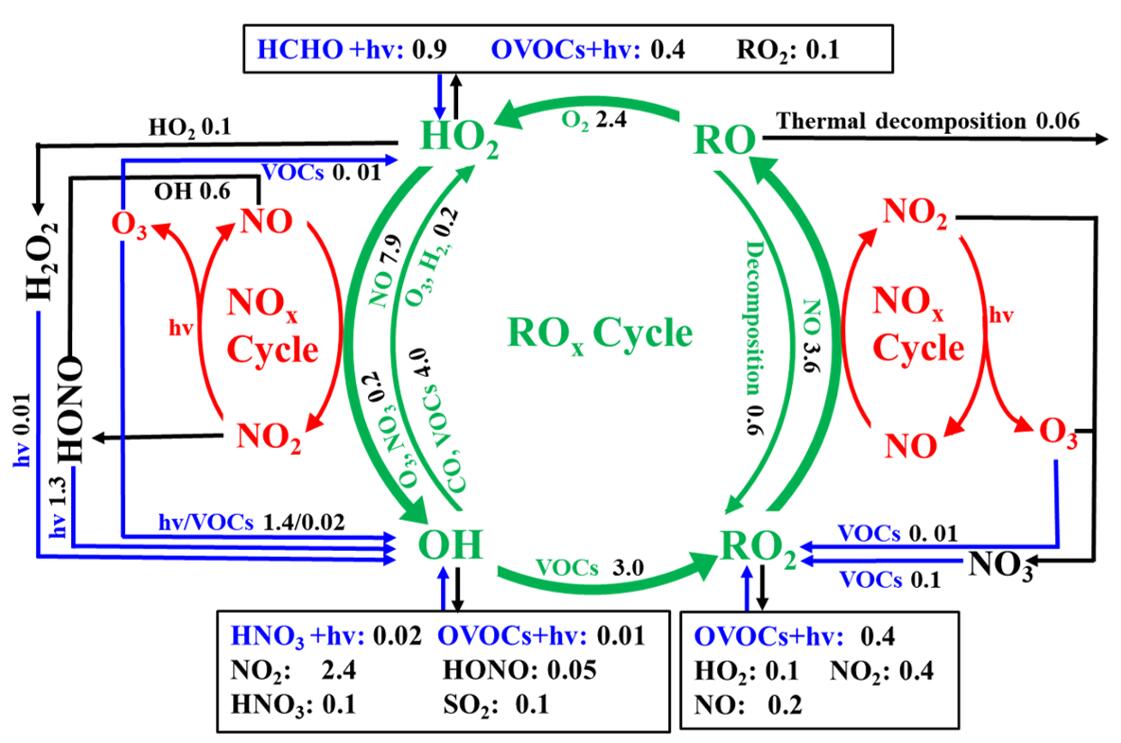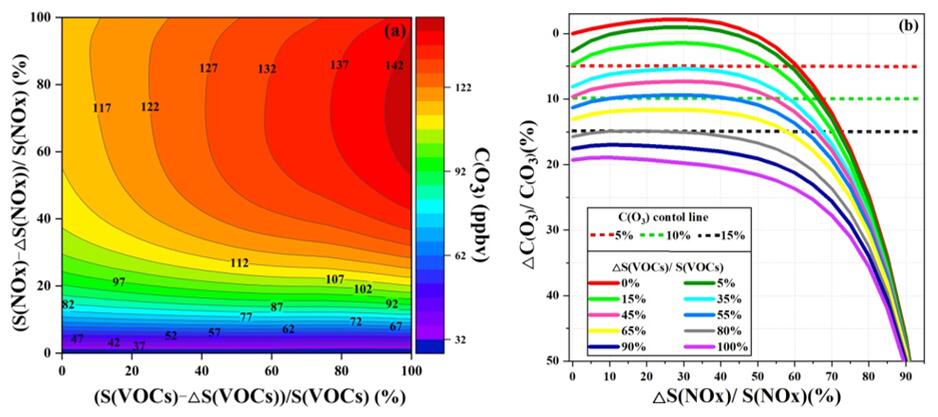Recently, the team of Atmospheric Environment led by Professor CHEN Jinsheng in the Institute of Urban Environment, Chinese Academy of Sciences (IUE, CAS) explored the atmospheric oxidation capacity and O3 pollution mechanism in a coastal city of Southeast China with an Observation-Based Model coupled to the Master Chemical Mechanism.
The elevated O3 concentrations enhance the atmospheric oxidation capacity (AOC) and have harmful effects on global climate change, ecosystems, and human health. The formation mechanisms of O3 pollution are extremely difficult to figure out, due to the complex types and sources of its precursors. O3 formation is affected by multiple factors such as O3 precursor speciation or level, atmospheric oxidation capacity, meteorological conditions and regional transport. To effectively control the tropospheric O3 pollution, exploration of the photochemical mechanism and judgment on the controlling factors of O3 formation become extremely important for scientific community.
A typical multi-day ozone (O3) pollution event was chosen to explore the AOC, OH reactivity, radical chemistry, and O3 pollution mechanism in a coastal city of southeastern China, with an observation-based model coupled to the Master Chemical Mechanism (OBM-MCM). The hydroxyl radical (OH) was the predominant oxidant (90±25 %) for daytime AOC, while the NO3 radical played an important role in AOC during the nighttime (72±9 %). Oxygenated volatile organic compounds (OVOCs; 30±8 %), NO2 (29±8 %), and CO (25±5 %) were the dominant contributors to OH reactivity, accelerating the production of O3 and recycling of ROx radicals (ROx = OH+HO2+RO2). Photolysis of nitrous acid (HONO, 33±14 %), O3 (25±13 %), formaldehyde (HCHO, 20±5 %), and other OVOCs (17±2 %) was a major ROx source, which played an initiation role in atmospheric oxidation processes. Combined with regional transport analysis, the reasons for this O3 episode were the accumulation of local photochemical production and regional transport. The results of sensitivity analysis showed that volatile organic compounds (VOCs) were the limiting factor of radical recycling and O3 formation, and the 5% reduction of O3 would be achieved by decreasing 20% anthropogenic VOCs. Controlling emissions of aromatics, alkenes, and alkanes with ≥ 4 carbons was beneficial for ozone pollution mitigation. The findings of this study provide significant guidance for emission reduction and regional collaboration for future photochemical pollution control in the relatively clean coastal cities of China and similar countries.
The research results were published on Atmospheric Chemistry and Physics under the title of Atmospheric oxidation capacity and ozone pollution mechanism in a coastal city of southeastern China: analysis of a typical photochemical episode by an observation-based model. PhD student LIU Taotao and Associated Professor HONG youwei from the Institute of Urban Environment are the first authors. Professor CHEN Jinsheng from the Institute of Urban Environment and Professor XUE likun from Shandong University are the corresponding authors. This study was funded by the Cultivating Project of Strategic Priority Research Program of the Chinese Academy of Sciences (XDPB1903), the FJIRSM&IUE Joint Research Fund (RHZX-2019-006), the Center for Excellence in Regional Atmospheric Environment, CAS (E0L1B20201), the Xiamen Youth Innovation Fund Project (3502Z20206094), the foreign cooperation project of Fujian Province (2020I0038) and Xiamen Atmospheric Environment Observation and Research Station of Fujian Province.

Figure 1. Daytime ROx budget during 20–29 September 2019 in Xiamen.

Figure 2. Simulation scenario of O3 reduction under the control of VOCs and NOx during September 20-29, 2019